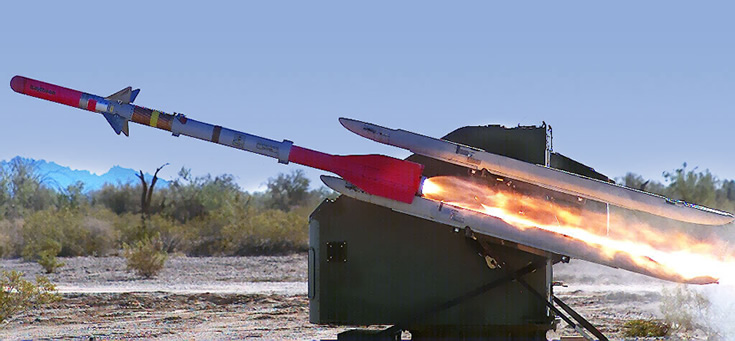Raytheon
Raytheon acquires Tucson-based Sensintel, Inc.
26 January 2015 - Raytheon Company has acquired privately-held Sensintel, Inc., a leading provider of unmanned aircraft systems (UAS) solutions to the intelligence and special operations markets.
Located in Tucson with approximately 50 employees, Sensintel will become part of Raytheon Company's Missile Systems business. The transaction is not expected to materially impact Raytheon's sales or earnings in the first quarter or full year 2015. Terms of the agreement were not disclosed. Sensitel developed the Coyote, Silver Fox, and Manta systems.
"Sensintel's expertise in unmanned aircraft systems solutions makes it a natural fit with Raytheon's Advanced Missile Systems product line," said Dr. Taylor W. Lawrence, Raytheon Missile Systems president. "The acquisition of Sensintel enhances the growth prospects of our UAS business and the advanced capabilities we can offer our customers."
Sensintel brings additional strong talent, technology, and relationships with the Special Operations Command (SOCOM), Office of Naval Research and U.S. Air Force Research Laboratory to Raytheon and its customers. The company is a leader in expendable remote sensing and UAS engineering, serving both government and commercial customers by optimizing and integrating mission-specific sensors and sub-systems into manned and unmanned platforms. It also provides training, technical and operational support to military, scientific and commercial sectors.

AI3 Missile System - photo courtesy Raytheon
Raytheon Missile System Intercepts Over-water UAS
28 August 2014 - Raytheon Company and the U.S. Army achieved the first intercept of a cruise missile by the Accelerated Improved Intercept Initiative missile. An AI3 missile also destroyed an unmanned aerial system (UAS). Both intercepts occurred during the recent Black Dart demonstration – a U.S. military exercise held July 29 - August 11 off the coast of California. Conducted annually since 2010, Black Dart 2014 was the first to be held in a marine environment, Participants included a navy destroyer and 47 UAVs flying 120 sorties.
Fired from the Avenger launcher, AI3 missiles intercepted both targets at low altitude over water and in a high-clutter marine environment – capabilities made possible by upgrades to the missile's semi-active seeker and radar. The ability to defeat UAS and cruise missile threats is the key requirement of the U.S. Army's Indirect Fire Protection Capability (IFPC) Block 1. IFPC is a mobile, ground-based weapon system designed to acquire, track, engage and defeat UAS, cruise missiles, rockets, artillery and mortars.
"Raytheon's AI3 missile is breaking new ground with its destruction of these challenging targets that are real threats to today's warfighter," said Dr. Thomas R. Bussing, Raytheon Advanced Missile Systems vice president. "We've developed a missile that integrates easily into the Army's existing systems. It's affordable, the risk is low and we can get it in the field soon."
Earlier this year, in preparation for the Black Dart event, AI3 missiles destroyed a 240 mm rocket and a UAS at Yuma Proving Ground, Arizona.
"Black Dart was the ideal venue for us to demonstrate AI3's expanded capabilities and to showcase the missile as a low-cost, complimentary interceptor for IFPC Block 1," added Bussing.
About AI3
In 2012-13, Raytheon developed and successfully tested a system, also called AI3, to counter rockets, artillery and mortars (C-RAM). The system included the AI3 missile as its centerpiece, plus fire control radar, command and control node and launcher. In Sept. 2013, the AI3 system destroyed 22 of 24 threats, including 107mm rocket targets at various quadrant elevations, as well as mortars, an unmanned aircraft system and improvised rocket-assisted mortars. Raytheon developed the AI3 system in just over 18 months to meet a Department of Defense urgent need, and demonstrated that it also meets IFPC Block 2 requirements for C-RAM.